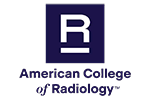Head Trauma
Common reasons for head trauma include falls, car accidents, and acts of violence. Initial imaging tests are done to figure out how bad the injury is and guide treatment.
For individuals with acute (0-7 days) mild, moderate, severe, or penetrating head or brain injury, head CT without contrast is usually appropriate as the first imaging test. On the basis of clinical assessment decision tools, some mild injuries should not require any imaging tests.
For individuals with unchanged neurologic symptoms without significant findings on initial CT, further CT scans or MRI without contrast may be appropriate. With significant findings from the first head CT scan, CT without contrast is usually appropriate. MRI without contrast may be appropriate.
For individuals with new or worse neurologic symptoms, CT without contrast is usually appropriate, and MRI without contrast may be appropriate.
For individuals with chronic (>3 months) or subacute (<3 months) head trauma experiencing cognitive problems, MRI of the brain or CT without contrast are usually appropriate.
For suspected injury to blood vessels in the brain, CT angiography of the head and neck with contrast is usually appropriate. Cervicocerebral arteriography (which looks at the blood vessels in the brain), MR angiography of the head and neck with or without contrast, MR angiography of the head and neck with and without contrast, and CT without contrast may be also appropriate.
For suspected cerebrospinal fluid leak, maxillofacial CT without contrast, CT without contrast, and temporal bone CT without contrast are usually appropriate. MRI of the head without contrast, CT cisternography, and DTPA cisternography may be appropriate.
For more information, see the Head Injury page.
This page was reviewed on January 24, 2024


